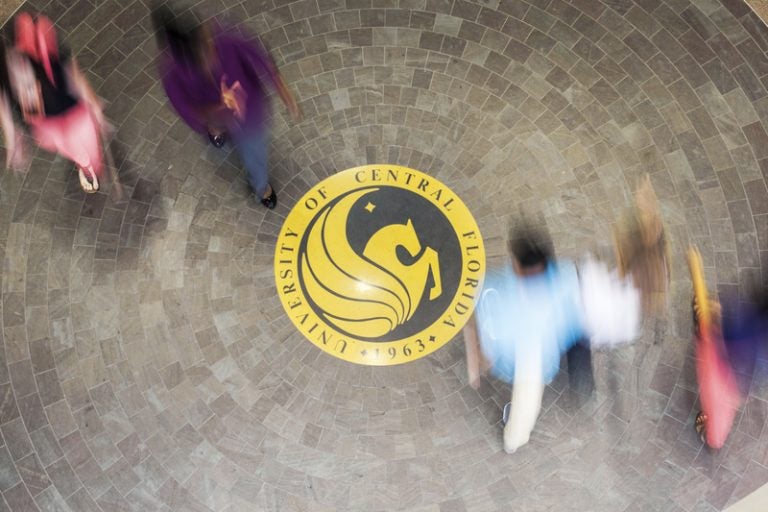Because of the collaborative nature of UCF’s faculty, the National Science Foundation has awarded the university a grant that will help fund the purchase of a $900,000 imaging device that will do everything from design nanoparticles of the future to delve into our civilization’s past.
The NSF approved the funding request because in addition to advancing scientific research, it’s meant to foster interdisciplinary collaboration at the University of Central Florida and beyond. Rather than siloed in one department’s lab, the state-of-the-art X-ray Photoelectron Spectrometer (XPS) with ultrafine imaging capability will be used by researchers from physicists to anthropologists.
“We went across the campus, from engineering to archaeology,” said Professor Sudipta Seal, who led the effort to acquire the technology. “A really interesting facet of this collaboration is how this instrument – beyond medicine and manufacturing and nanotechnology – will help us understand the origin of civilization. That’s the impact of getting this instrument on campus.”
X-ray photoelectron spectroscopy analyzes the surface chemistry of a material by irradiating a solid surface with a beam of X-rays while measuring the kinetic energy and electrons emitted from the surface. It can be used to examine corrosion on medical implants, help develop high-end microchips, characterize nanomaterials, study the behavior of biological cells over time, and detect trace elements in forensic cases, among other things.
“The breadth and the width of what the instrument can do is phenomenal, from electronics to medical to archaeological to manufacturing to entertainment to forensics – it goes on and on,” said Seal, chair of the Department of Materials Science and Engineering, and past director of both UCF’s NanoScience Technology Center and its Advanced Materials Processing Analysis Center.
Those in UCF’s Department of Anthropology in the College of Sciences hope the instrument will help answer questions about the materials and technologies of ancient cultures. Knowing how a material is composed can answer questions about ancient trade, innovation or even human diet.
“The receipt of this grant highlights the already interdisciplinary nature of anthropological research, particularly archaeology,” said Professor Tosha Dupras, chair of the Department of Anthropology. “Technologies and methodologies such as the XPS that are used more widely in other scientific disciplines can often be utilized by anthropologists to inform on questions of the past. This grant also illustrates a successful inter-college collaboration, and the true nature of interdisciplinary research.”
UCF has an obsolete X-ray spectrometer – 1980s technology that was donated to the university in the late 1990s – but its capabilities are limited.
The $629,650 NSF grant will fund most of the purchase of the new instrument, with mandatory matching funds from the university paying the rest. It will be housed in the new Research I building, formerly called Interdisciplinary Research and Incubator, which is nearing completion.
It will be the most powerful instrument of its type in a 100-mile radius, Seal said, so it’s expected to draw researchers from area hospitals, corporations and others outside academia who will be able to use it.
Collaborators on the grant application included Assistant Professor Scott Branting from the Department of Anthropology, Assistant Professor Tania Roy from the NanoScience Technology Center, Professor Yongho Sohn from the Department of Materials Science and Engineering, Assistant Professor Xiaofeng Feng from the Department of Physics, Assistant Professor Yang Yang from the NanoScience Technology Center, and Amit Kumar, associate director of research programs at BRIDG.
